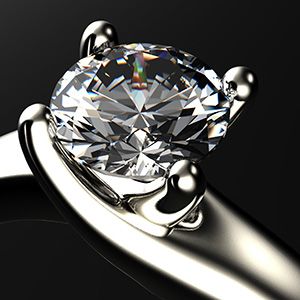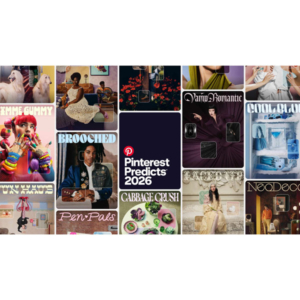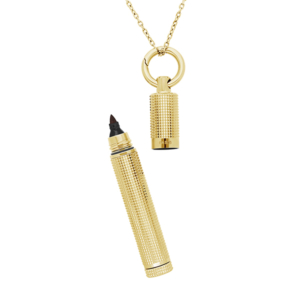
Yesterday, I spoke with Laura Brett, vice president of the National Advertising Division (NAD), the ad watchdog that just issued marketing recommendations to lab-grown seller Diamond Foundry and its subsidiary, Vrai.
Diamond Foundry’s response to the NAD’s decision—which stemmed from a complaint from the Natural Diamond Council—was that, while it disagrees with certain recommendations, it pledged to follow them “out of respect for the self-regulatory process.” It also noted the NAD said the company’s site was “replete with clear messaging.” (The disputed ads were mostly on social media.)
Brett says the NAD will monitor the situation. While participation in the NAD’s process is voluntary, the group does have tools at its disposal: It sometimes notifies the Federal Trade Commission about non-compliance, and offers advertising guidance to Facebook.
Brett sent me the full NAD decision, which goes into a lot more detail than what was posted online. Here are some excerpts that I found noteworthy, as they illustrate not only the group’s thinking but, to some extent, that of the Federal Trade Commission, which guides NAD’s decisions:
• A lab-grown diamond [LGD] “sold only as a ‘diamond’ [without other modifiers] reasonably conveys a message to consumers that the diamond, like the majority of diamonds on the market, is a mined diamond.… Consumers purchase diamonds infrequently and may not be aware that real diamonds can be created and not mined.… [T]he material fact that a diamond is created in a laboratory and not mined should be disclosed to consumers.”
The NAD recommended that origin disclosure be “clear and conspicuous and in close proximity to the identification of the product as a ‘diamond’ product, and that such disclosure immediately precede, with equal conspicuousness, the word diamond.… [D]isclosures should be typically visible on mobile devices without the need to scroll down to view them.”
• “The term created diamonds may be confusing to consumers because it does not communicate that the diamonds are unmined LGDs. Mined diamonds are also created, albeit not in a laboratory.”
We should note this comment refers to the term created, unadorned and without other modifiers. The FTC has okayed the terms lab-created and [company name]-created.
• The term diamonds created aboveground “does not sufficiently convey the message that the diamonds are man-made or laboratory grown” because “diamonds are also found aboveground in secondary sources such as rivers and the sea floor.”
• “While some consumers may interpret [the terms sustainably created and sustainably grown] as an effort to distinguish diamond mining from [other production methods], another reasonable takeaway is that sustainably is meant to describe an environmentally friendly way of extracting diamonds from the earth.”
The NAD recommended Diamond Foundry not use those terms without other disclosures, as well as the term world positive, for similar reasons.
– “[C]ertain social media posts…[make] unqualified claims that [Diamond Foundry’s] diamonds are ‘real diamonds.’ Without context explaining that the ‘real’ diamonds are created in laboratory and not mined, consumers may reasonably [deduce] that Diamond Foundry’s diamonds are mined diamonds.”
Some final thoughts:
One point some people miss is that the FTC wants communications to be both truthful and clear. Being truthful is of course a requirement. But clarity is, too.
The terms aboveground or real may be truthful (I would quibble with world positive), but the NAD felt they weren’t clear. Similarly, the FTC no longer recommends the term synthetic for lab-grown gems, because, while it may be scientifically accurate, consumers find it confusing.
Obviously, if lab-grown diamonds are as popular as billed, there shouldn’t be a problem touting their origin. But, generally speaking, there’s an economic incentive to muddy the waters: a 1 ct. F VS2 lab-grown sells for $2,000 online, while a 1 ct. F VS2 natural sells for $4,600. That’s why NAD, quite rightly, called a diamond’s origin a “material” fact.
Even if you disagree with the FTC Guides, their diamond disclosure rules are easy to understand, and even with the recent tweaks, they’ve been consistent for decades. Many companies follow them and do fine.
There are rumblings that the FTC will step up enforcement of the jewelry sector. I hope it does, particularly on an issue not relevant to this decision—sites that market simulants (non-diamond imitations) as lab-grown diamonds. I also hope the FTC takes a harder line on “eco” claims. The Biden administration has said it’s committed to fighting climate change, and an easy way to do that is to crack down on rampant greenwashing.
It’s a sad fact that the jewelry world needs watchdogs. May they never stop watching.
Anyone who wants further guidance on lab-grown disclosure rules can read this FTC blog post; this interview with an FTC attorney; the FTC’s warning letters to diamond companies; this second post-letter interview with an FTC attorney; this Jewelers Vigilance Committee booklet; and, of course, the Guides themselves, and the FTC’s 2018 revision statement.
(Photo: Getty)
- Subscribe to the JCK News Daily
- Subscribe to the JCK Special Report
- Follow JCK on Instagram: @jckmagazine
- Follow JCK on X: @jckmagazine
- Follow JCK on Facebook: @jckmagazine







